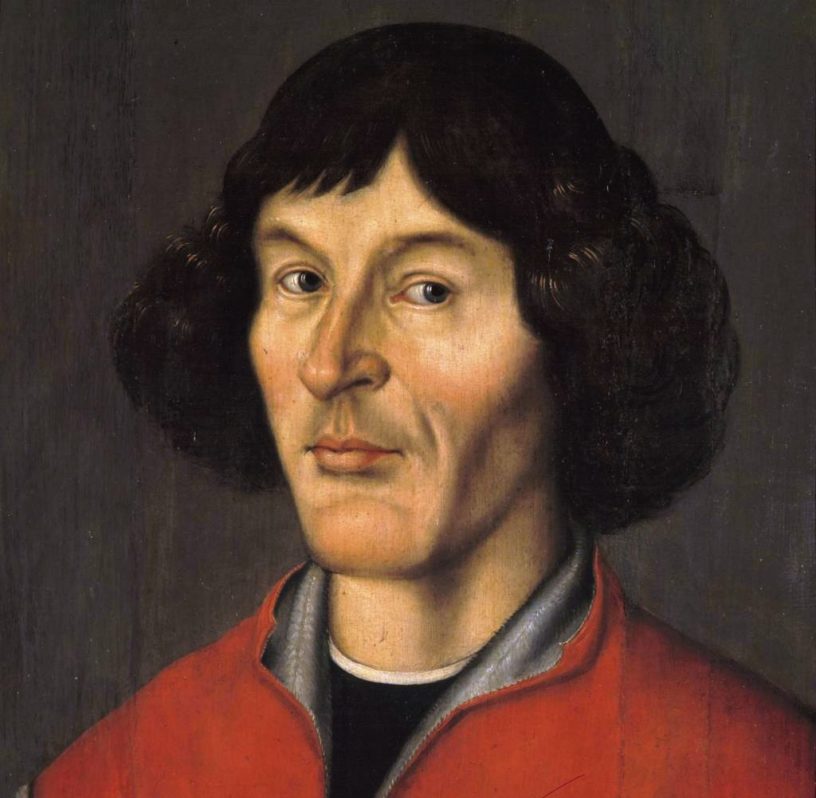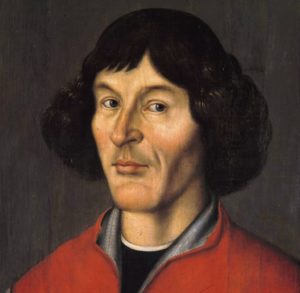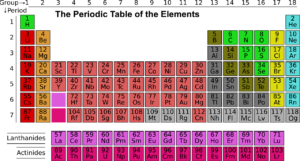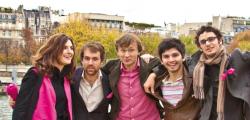Top 10 Facts about Nicolaus Copernicus
Top 10 Facts about Nicolaus Copernicus
Copernicus lived out his life in Royal Prussia, a region that had been part of the Kingdom of Poland since 1466. He obtained a doctorate in canon law and was also a mathematician, astronomer, physician, classics scholar, translator, governor, diplomat, and economist. Nicolaus Copernicus was a Renaissance-era polymath. However, the publication of Copernicus’ book “On the Revolutions of the Celestial Spheres”, just before his death in 1543, was a major event in the history of science. It triggering the Copernican Revolution and made a pioneering contribution to the Scientific Revolution. Let’s take a look at the top ten facts about Nicolaus Copernicus.
1. Copernicus family and private life
Nicolaus was the youngest of four children. His brother Andreas (Andrew) became an Augustinian canon at Frombork (Frauenburg). His sister Barbara, named after her mother, became a Benedictine nun and, in her final years, prioress of a convent in Chełmno (Kulm); she died after 1517. His sister Katharina married the businessman and Toruń city councillor Barthel Gertner and left five children, whom Copernicus looked after to the end of his life. Copernicus never married and is not known to have had children.
2. He offered medical services with no degree
When Copernicus was 11 years old, after the death of his father, his uncle took him in along with his siblings. Later in life, his uncle grew old and fell very ill. Copernicus acted as his physician. He also lent his services to the bishop who succeeded his uncle as well as members of his church chapter. He did so, however, without ever having a medical degree.
3. He came from a family of merchants and clergy
The astronomer’s father, also named Nicolaus Copernicus, was a successful copper mercantile in Krakow. His mother, Barbara Watzenrode, came from a powerful family of merchants, and her brother, Lucas Watzenrode the Younger, was an influential Bishop. Two of Copernicus’s three older siblings went on to join the Catholic Church, one as a canon and one as a nun.
4. Copernicus spoke many languages (Polyglot)
Copernicus’ uncle, Lucas Watzenrode, funded his nephew’s education. His first challenge was Latin and in 1491 Copernicus took on astronomy, math, philosophy, and logic at Krakow University. Five years later, he headed to modern Italy’s Bologna University to study law, where he likely picked up some Italian. During his studies he also read Greek meaning, modern historians think he knew or understood five languages.
5. Copernicus is credited with heliocentrism
Copernicus is credited with introducing heliocentrism, the astronomical model in which the Earth and planets revolve around the Sun at the centre of the Solar System, rather than the sun orbiting the Earth. But several ancient Greek and Islamic scholars from various cultures discussed similar ideas centuries earlier. For example, Aristarchus of Samos, a Greek astronomer who lived in the 200s BCE, theorized that Earth and other planets revolved around the Sun.
Copernicus knew of the work of earlier mathematicians. In a rough copy of his 1543 manuscript, he even included passages acknowledging the heliocentric ideas of Aristarchus and other ancient Greek astronomers who had written previous versions of the theory. However, before he submitted the manuscript, Copernicus removed this section. It is speculated that he removed the pages to present the work as his own or it may have been simply switching out a Latin quote for a “more scholarly” Greek quote and incidentally removing Aristarchus. These extra pages weren’t found for another over 300 years.
6. He studied in several universities long before he got a degree
Copernicus spent over ten years studying in universities across Poland and Italy, but he would always leave before he got his degree. Why skip the diplomas? Some historians argue that at the time, it was not unusual for students to leave a university without earning a degree. Moreover, Copernicus didn’t need a degree to practice medicine or law, to work as a member of the Catholic Church, or even to take Graduate or higher-level courses.
But right before returning to Poland he received a doctorate in canon law from the University of Ferrara. According to Copernicus scholar Edward Rosen, this wasn’t exactly for scholarly purposes, but that to “show that he had not squandered his time, he had to bring home a diploma. That cost much less in Ferrara than in the other Italian universities where he studied.”
7. He might have had an affair despite his oath
As an official in the Catholic Church, Copernicus took a vow of celibacy. He never married and was most likely a virgin. It is believed, however, that he did not keep that oath. In the late 1530s, Anna Schilling, a woman in her late forties, began living with him. Schilling may have been related to Copernicus, some historians think he was her great uncle, and she worked as his housekeeper for two years. For unknown reasons, the bishop he worked under admonished Copernicus twice for having Schilling live with him, even telling the astronomer to fire her and writing to other church officials about the matter.
8. There’s a chemical element named after him
In 2010, an element was named to honour the astronomer. Take a look at the periodic table of elements, and you might notice one with the symbol Cn. Called Copernicium, this element with atomic number 112 is highly radioactive and has the most stable isotope with a half-life of around 30 seconds.
9. Finding his remains
It was said that Copernicus died in 1543 and was buried somewhere under the cathedral where he worked. However, archaeologists weren’t sure of the exact location of his grave. In 2005, they finally discovered his remains. They found part of his skull and skeleton under the church’s marble floor by the altar. It took three years to complete forensic facial reconstruction and compare DNA from the astronomer’s skeleton with hair from one of his books, but archaeologists were able to confirm that they had found his skeleton. Members of the Polish clergy buried Copernicus for a second time at Frombork in 2010.
10. Statues commemorating him
In Warsaw, Poland, near the Polish Academy of Sciences, stands a prominent statue of the astronomer called ‘Nicolaus’. Replicas of this statue stand outside Chicago’s Adler Planetarium and Montreal’s Planétarium Rio Tinto Alcan. Copernicus also has a museum and research laboratory, Warsaw’s Copernicus Science Centre, dedicated to him.
Planning a trip to Paris ? Get ready !
These are Amazon’s best-selling travel products that you may need for coming to Paris.
Bookstore
- The best travel book : Rick Steves – Paris 2023 – Learn more here
- Fodor’s Paris 2024 – Learn more here
Travel Gear
- Venture Pal Lightweight Backpack – Learn more here
- Samsonite Winfield 2 28″ Luggage – Learn more here
- Swig Savvy’s Stainless Steel Insulated Water Bottle – Learn more here
Check Amazon’s best-seller list for the most popular travel accessories. We sometimes read this list just to find out what new travel products people are buying.














